Do you love making art and using your imagination? So do we!
The Art Challenge:
In this activity, we'd like to challenge young explorers to think about and draw something. And after the Art Challenge is over, we'll select a few imaginative drawings to be featured on the NOAA SciJinks and NASA Space Place websites!
So, get ready to exercise that creative brain of yours! Here's what you'll need:
- Paper
- Art supplies (pencils, markers, crayons, paints – whatever you like to use)
- A grownup helper with a camera or scanner and access to email
Art Challenge prompt:
Have you ever watched a lightning storm from your window at home? Did you know that scientists can use weather satellites to watch lightning from above, too?
In June 2024, the United States will be launching its latest weather satellite called GOES-U (GOES is short for Geostationary Operational Environmental Satellite). GOES-U will be the fourth and final satellite in the GOES-R group of satellites that keep an eye on Earth’s weather from space.
The information that GOES-U and its sister satellites collect is used in many ways! GOES-U will help meteorologists forecast the path of hurricanes, how strong severe thunderstorms can become, and when tornadoes will form. GOES-U will also help scientists “see” lightning and predict where it will strike.
Want to learn more about the GOES satellites? Meet a GOES-R Series weather satellite here!
Draw how you imagine lightning to look, either within the clouds or striking the ground, from above the sky or from your window. Use any materials you would like – crayons, markers, pencils, pens, aluminum foil, paint, yarn, or anything else you find. The sky's the limit!
Submit your artwork between 5/1/24 and 5/31/24. Selected art submissions will appear on the website in early June!
Watch this video to learn about what causes lightning! Click here to download this video (1920x1080, 102 MB, video/mp4).
Want to launch your learning and zap your knowledge of lightning? GOES to this article and check out the video and poster to learn more about lightning!
How to submit your art:
Once you've gotten your ideas on the page, have a grownup take a photo or scan of the drawing and email the following to NASAKidsArt@jpl.nasa.gov:
- Picture of drawing
- First name of artist
- Age of artist
- Completed release form (download here)*
That's it! Have fun creating and we can't wait to see your drawings!
Art Challenge Selections
Draw what your space weather report would look like!
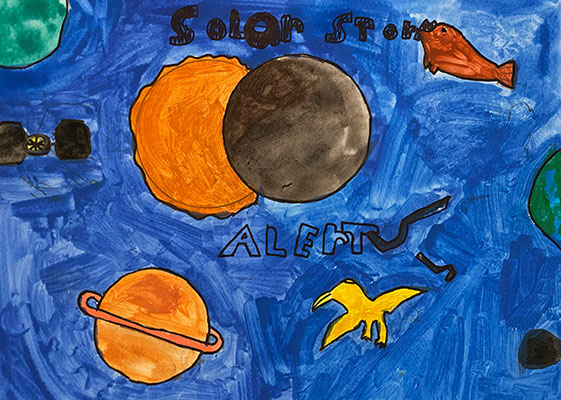
Alder, 9
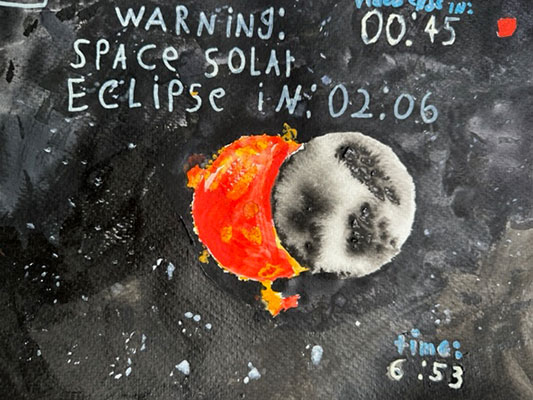
Amelia, 10
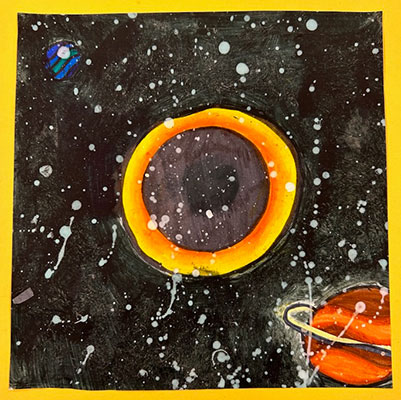
Arabella
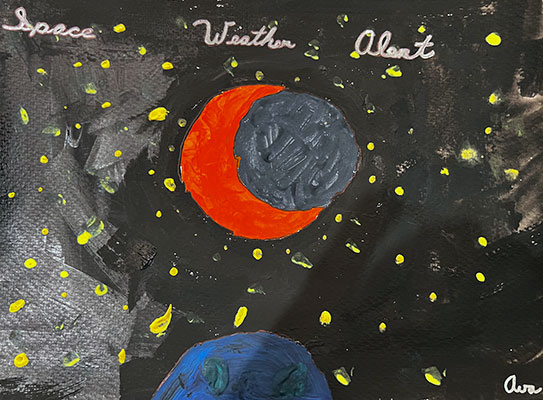
Ava
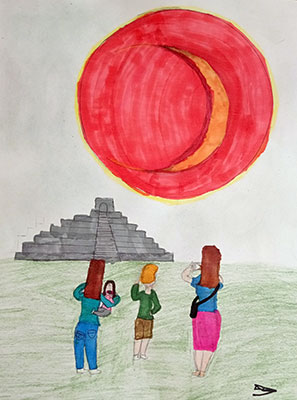
Danae, 8
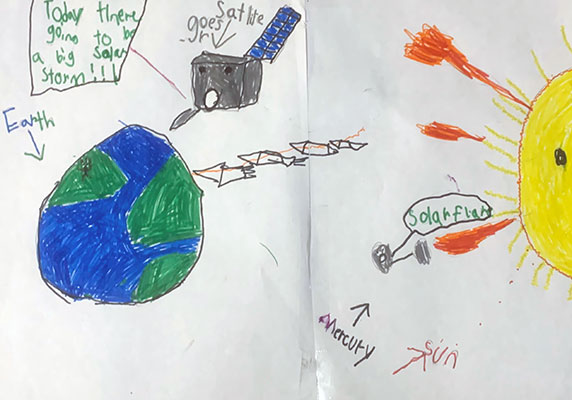
Dravn, 7
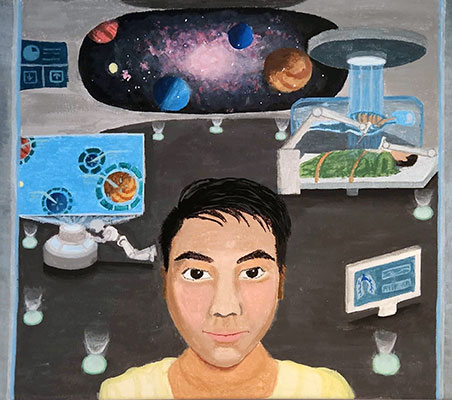
Eddie, 16
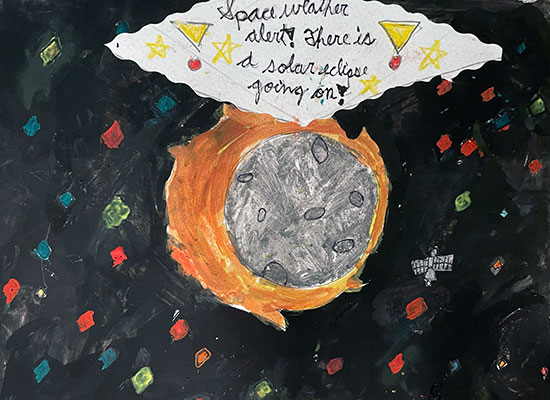
Elladya, 9
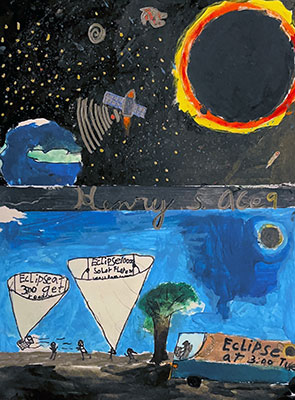
Henry, 9
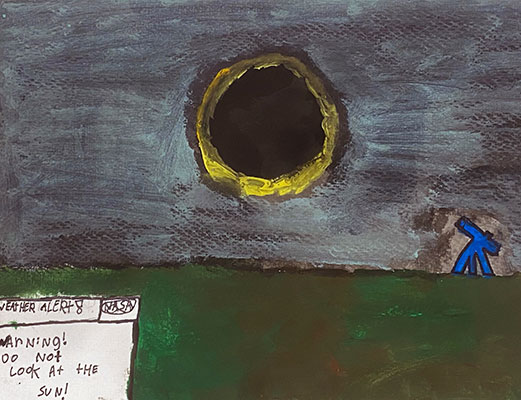
Huck, 11
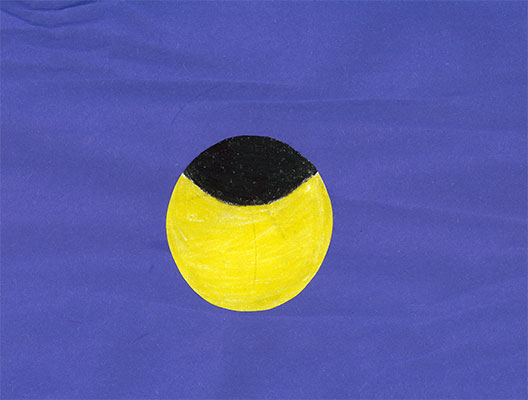
Ian
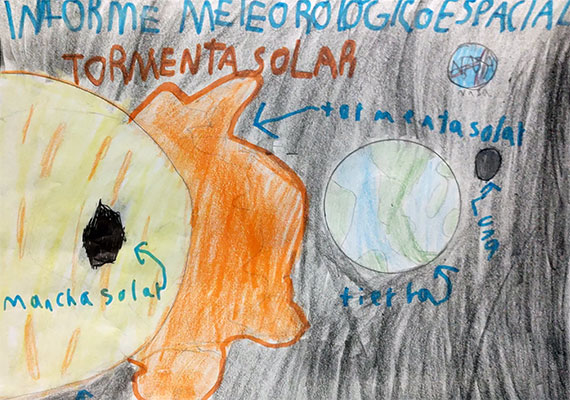
Isaias, 9
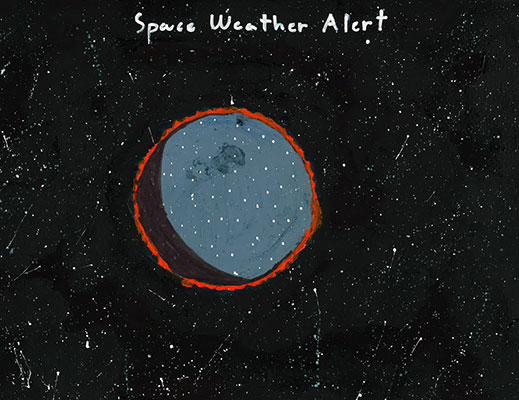
Jonathan, 11
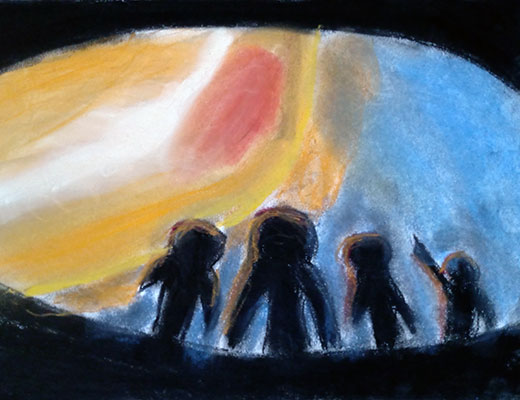
Jose, 12
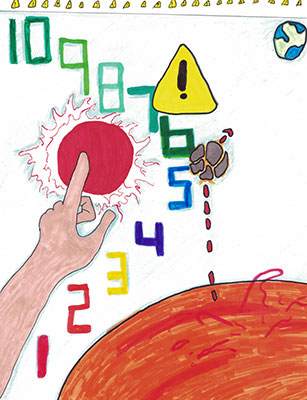
Kayden, 11
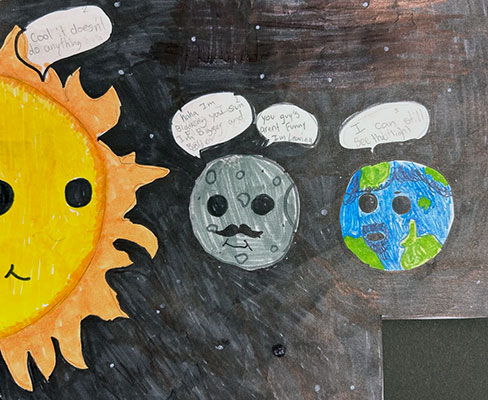
Leo
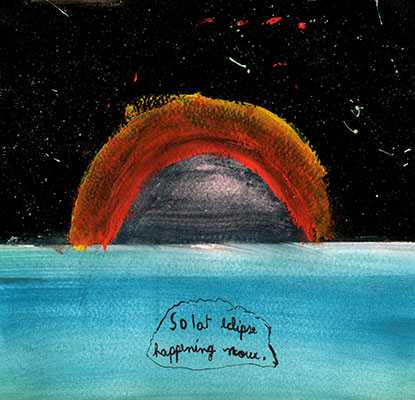
Lucas, 9
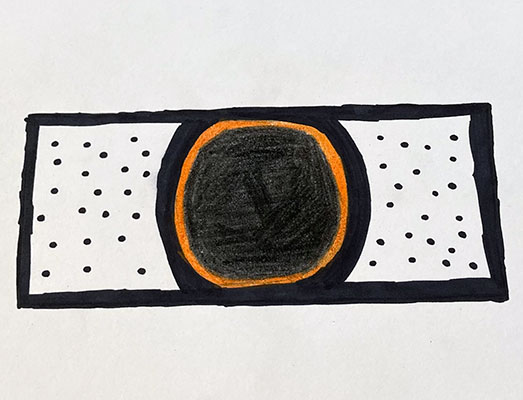
Lydia, 11
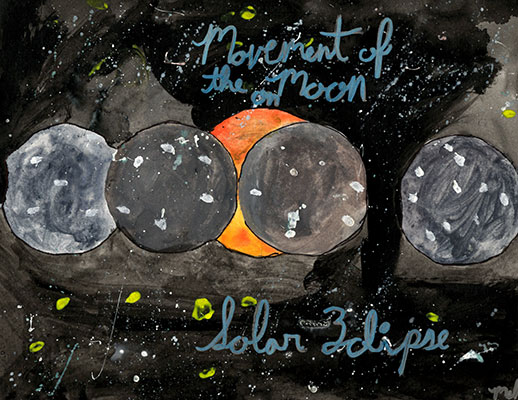
McKenzie, 9
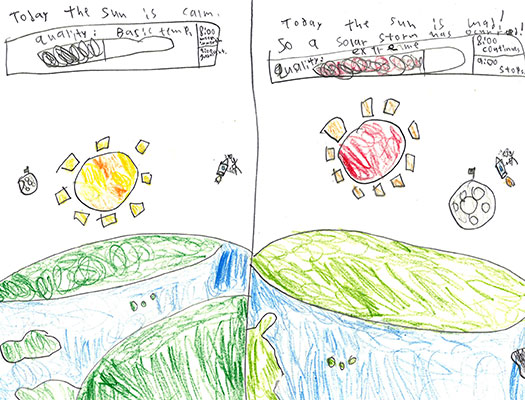
Nolan, 10
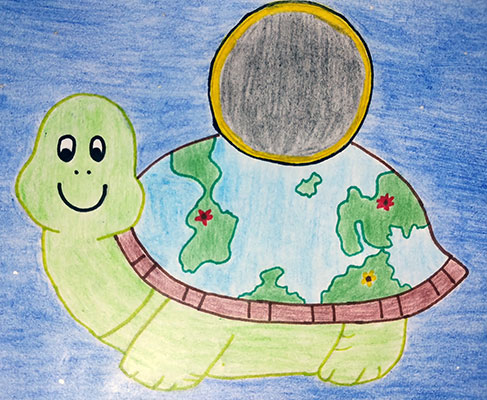
Samuel, 10
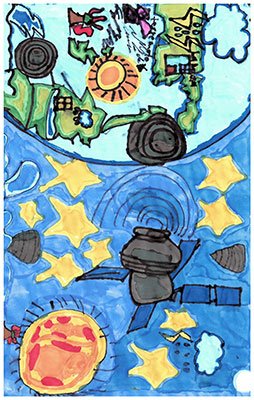
Sebastian, 7
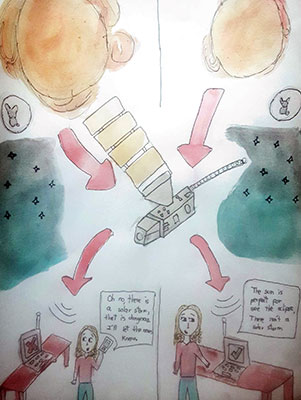
Sofia, 13
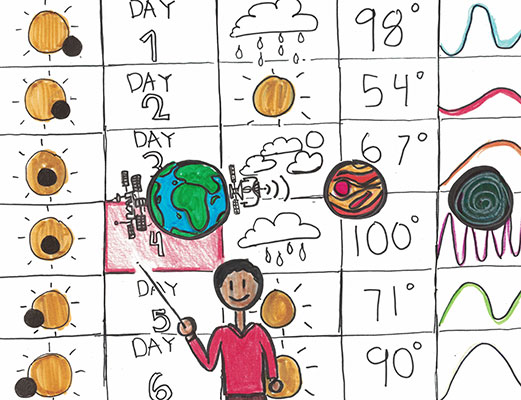
Winston, 11
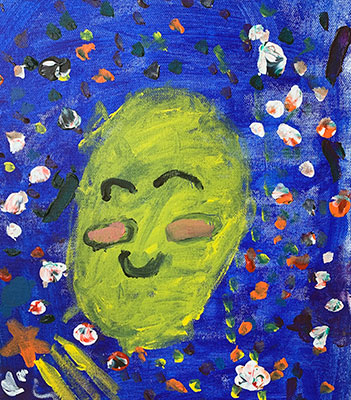
Ximena, 6




